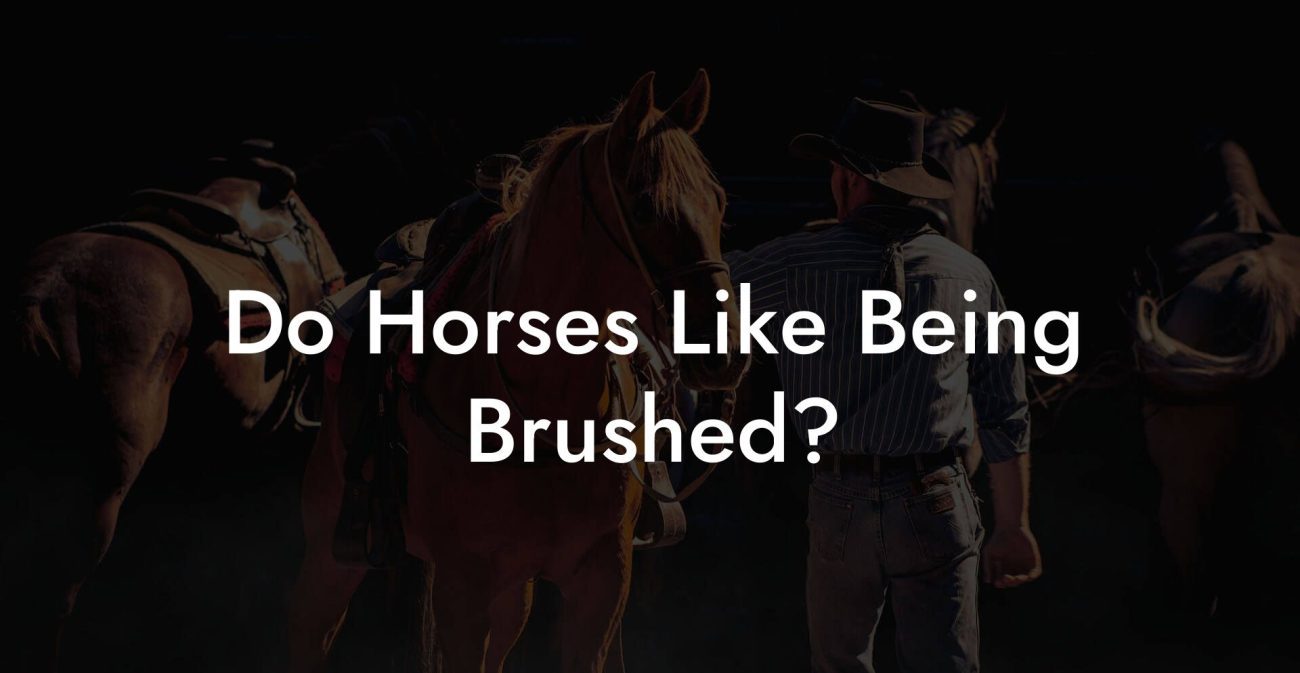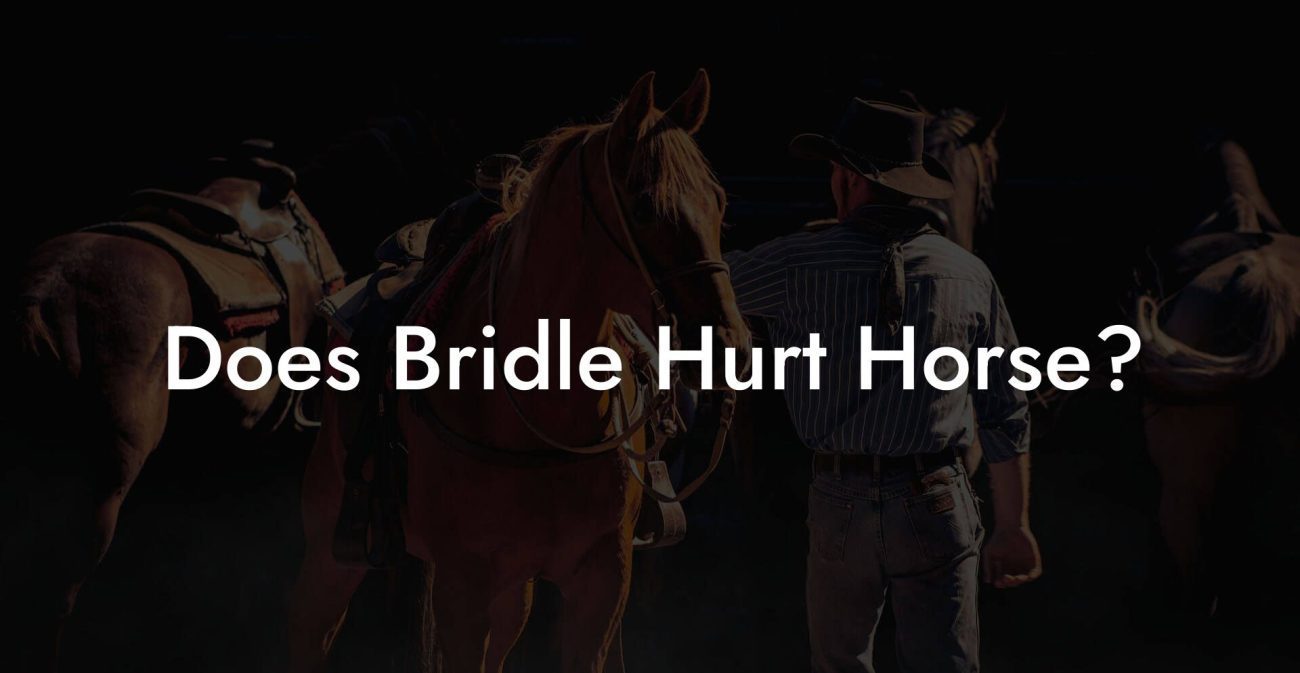Ever wondered if your equine buddy is the next tall, dark, and handsome superstar or more of a compact, fun-sized pal? When we ask “How Big Is The Average Horse?”, we’re not just talking about some random number, we’re diving headfirst into the captivating world of horse anatomy, breed secrets, and the unique care tips every Gen-Z and millennial horse lover should know. Buckle up for a wild (yet surprisingly down-to-earth) ride through measurements, genetics, nutrition, and care hacks that will unravel all your equine size mysteries.
Quick Links to Useful Sections
- How Big Is The Average Horse? The Unbridled Truth
- Measuring Up: Decoding Horse Dimensions
- Compare and Contrast: The World of Breeds
- Light vs. Heavy Horses
- Ponying Around
- Warmbloods, Drafts, and More
- Why Horse Size Matters: More Than Just Numbers
- Nutritional and Environmental Influences on Horse Growth
- Genetics: The Blueprint of Your Equine
- Nutrition: Feeding the Future
- Environment and Exercise: The Great Outdoors
- Caring for a Horse: Practical Tips for Gen Z and Millennial Equestrians
- Designing a Modern Equine Facility
- High-Tech Health Monitoring
- Feeding Right in the Digital Age
- Exercise and Mental Stimulation
- The Role of Genetics and Breed in Equine Stature
- Inherited Traits: The Building Blocks
- Selective breeding and Modern Innovations
- Environmental Interactions with Genetics
- Common Myths About Horse Size: Debunking the Neigh-sayers
- Myth 1: Bigger Always Means Better
- Myth 2: Ponies Are Just Mini Horses
- Myth 3: All Horses Grow at the Same Rate
- Advanced Equine Health: Managing Size-Related Issues
- Managing Weight and Avoiding Obesity
- Bone Health and Joint Care
- Regular Veterinary Checkups
- Equine Grooming and Maintenance: Beyond the Bridle
- Grooming Routines That Shine
- Tack and Equipment Fit
- Environmental Enrichment
- Resources and Community Support: Your Next Steps
- Online Communities and Forums
- Workshops and Webinars
- Local Equestrian Centers and Veterinarian Networks
- Modern Tech Tools
- Equine Training and Exercise: Strengthening the Bond
- Structured Exercise Programs
- Incorporating Play and Variety
- Cool-Down and Recovery
- Integrating Modern Technology into Traditional Horse Care
- Smart Stable Systems
- Health-Tracking Wearables
- Digital Vet Consultations
- Your Journey to Empowered Equine Health and Success
- Frequently Asked Questions About Horse Size and Care
How Big Is The Average Horse? The Unbridled Truth
When it comes to the size of horses, there's no one-size-fits-all answer. Generally, the average horse stands between 14.2 and 17 hands high (a hand being 4 inches) at the withers, translating roughly to 58-68 inches tall. However, factors like breed, age, gender, and nutrition can shift these numbers faster than you can say “neigh.” While thoroughbreds might soar toward the upper end of the spectrum, ponies and miniature horses keep things delightfully compact.
But size isn’t everything, well, maybe it is for some aspects of horse care. A horse’s size influences everything from its nutritional needs to its exercise routine, shelter space, and even vet care. So while you’re busy deciding on which Instagram-worthy stable setup suits your aesthetic, understanding how big your horse is can be a game changer.
In this guide, we’ll journey through understanding average horse size, explore the factors influencing their growth, and even bust some myths along the way. Whether you’re a seasoned horse owner or someone just diving into the equestrian lifestyle, this comprehensive guide is here to sprinkle a little humor, a dash of science, and a whole lot of practical advice into your stable of knowledge.
Measuring Up: Decoding Horse Dimensions
The horse world is full of jargon and measurement terms that might seem as cryptic as ancient runes. But fear not, here’s a quick crash course:
- Hands: Horses are traditionally measured in “hands,” where one hand equals 4 inches. This measurement is taken from the ground to the highest point of the withers (the ridge between the shoulder blades).
- Inches and Centimeters: While older generations swear by hands, many modern horse owners prefer inches or centimeters. Converting is simple: just multiply the number of hands by 4 to get inches.
- Weight: The average horse weighs between 900 and 2,200 pounds. But remember, the larger the horse, the more feed, space, and specialized care it might need.
Understanding these units isn’t just trivia; it’s crucial for making informed decisions on everything from stable design to feed quantities. Whether you’re measuring a towering warmblood or a pint-sized pony, knowing how to interpret these dimensions can make a big difference.
Compare and Contrast: The World of Breeds
Not all horses are created equal, just like people, varieties abound! Let’s gallop through some of the most common breeds and size variances that make horse riding far from boring:
Light vs. Heavy Horses
In the equine universe, horses are often split into “light” and “heavy” categories. Light horses, like Arabians and Thoroughbreds, are celebrated for their sleek builds and agility. These beauties typically stand between 14.2 and 16 hands high. On the flip side, heavy horses such as Percherons and Clydesdales can tip the scales in both height and muscle, often simplifying the phrase “big, burly, and beautiful.”
Ponying Around
Ponies are the cuteness overload of the horse world, generally measuring less than 14.2 hands. They may be small, but don’t be fooled, these diminutive dynamos have big personalities and require just as much love, feed, and care as their larger cousins. Miniature horses, a subcategory of ponies, can be as petite as 30 inches tall, making them perfect for people with limited space or those looking for a pocket-sized pal.
Warmbloods, Drafts, and More
Warmbloods are the go-to choice for disciplines like dressage and eventing and usually fall somewhere in the middle with a balanced build and an average height of around 16 hands. Draft horses, known for their imposing size and strength, often exceed the average measurements and are ideal for heavy work and pulling competitions.
The fascinating diversity among breeds means that while the term “average horse” might imply a starting point, there is an entire spectrum of sizes, temperaments, and care requirements waiting to be discovered.
Why Horse Size Matters: More Than Just Numbers
You might be thinking, “Who cares if my horse is a few inches taller than the neighbor’s?” But in the world of equine care, size plays a pivotal role in exercise routines, dietary needs, and even the health of their hooves.
Nutrition: Bigger horses need more calories to maintain energy, especially when they’re trotting around all day. Their feed, often a mix of hay, grains, and supplements, must be calibrated not just to provide energy but also to maintain proper weight and prevent disorders like laminitis.
equipment and Tack: Equipment like saddles, bridles, and even grooming tools are not “one size fits all.” A horse’s size affects the fit and comfort of its gear, making proper measurement essential for preventing injuries or discomfort.
Stabling and Space Requirements: Simply put, a larger horse demands a larger stable and more turnout space to avoid stress and injuries. Gen Z and millennial horse enthusiasts often balance modern aesthetics with functionality when designing stables and riding arenas.
Ultimately, understanding your horse’s size ensures that every aspect of its life, from diet to daily exercise, from grooming to health care, is perfectly tailored to its needs.
Nutritional and Environmental Influences on Horse Growth
While genetics set the baseline for a horse’s size, the environment and nutrition can nudge that number up or down. Think of it as nature’s version of “customizing your ride” (pun absolutely intended).
Genetics: The Blueprint of Your Equine
Just like how a superstar athlete inherits genes from their parents, a horse’s growth trajectory is largely determined by its lineage. Breeds known for size and strength often pass on these traits to their offspring. But don’t lose hope if your horse isn’t exactly the next draft champion, proper care and nutrition can help maximize its genetic potential.
Nutrition: Feeding the Future
Proper nutrition is the cornerstone of healthy growth. For young horses (foals), a balanced mix of high-quality hay, grains, and specific vitamins is essential for optimal development. As the horse matures, their diet shifts to include a mix that supports muscle tone without leading to obesity. Feed choices not only affect weight but also play a role in the overall vitality and performance of the horse.
The modern equine nutrition scene offers options that blend traditional feed with innovative supplements, ensuring your four-legged friend is fuelled for peak performance. This is particularly crucial for active riders who engage in competitive shows or long trail rides.
Environment and Exercise: The Great Outdoors
The environment in which your horse grows and exercises affects its overall size and health. Horses raised in open pastures with ample space to stretch their legs tend to develop more evenly, benefiting from natural movements and varied terrain. Conversely, horses kept in confined spaces might not build the same muscle mass or exhibit the same bone strength.
Regular exercise routines tailored to the horse’s size and needs are essential. Whether it’s a slow, scenic trail ride or an energetic round-pen session, the right balance of movement promotes healthy growth, minimizes the risk of injury, and helps maintain an optimal weight.
Caring for a Horse: Practical Tips for Gen Z and Millennial Equestrians
Owning a horse isn’t just about the Instagram aesthetics, it's a full-blown lifestyle that combines passion, hard work, and a splash of modern technology. Here’s how to ensure your equine friend stays in peak condition no matter what their size.
Designing a Modern Equine Facility
Gone are the days of musty, outdated stables. Today’s horse care aficionados are all about combining functionality with a crisp, minimalist, and eco-friendly design. Design your stable with plenty of natural lighting, comfortable quarters for your horse to relax, and enough space to host a Zen-like turnout area that keeps stress at bay.
High-Tech Health Monitoring
Embrace technology to monitor your horse’s well-being. Smart devices that track activity levels, temperature, and even heart rate can alert you if something seems off. Whether it’s a subtle shift in movement or a change in eating habits, digital tools can help you make timely care decisions, because an informed owner is a happy owner.
Feeding Right in the Digital Age
Explore modern nutritional strategies to cater to your horse's specific dietary needs. There are apps and online platforms that can help you plan and track feed regimens, ensuring your equine companion gets the optimal mix for muscle maintenance and overall health. With social media and online communities, you can exchange tips and even share your horse’s #MealPrepMondays with a global audience.
Exercise and Mental Stimulation
Horses, much like us, thrive on a mix of physical and mental stimulation. Tailor your exercise routine to your horse’s size, a larger horse might enjoy brisk cantering sessions, while a smaller pony might benefit from agility courses designed with fun challenges. Don’t forget that regular interaction and mental play, like introducing new obstacles or training tricks, keep your partner in crime alert and engaged.
In a world where wellness is paramount, caring for a horse is about marrying technology with traditional practices. Your four-legged friend deserves a plan that adapts to their evolving needs, ensuring they thrive both physically and mentally.
The Role of Genetics and Breed in Equine Stature
Ever heard the saying, “You can’t choose your family?” In the equine world, your genetic blueprint is the starting point for your horse’s height, weight, and overall build. Let’s break it down:
Inherited Traits: The Building Blocks
Just like your favorite celebrity with enviable traits, horses inherit characteristics from their parents. Breeds like the Arabian, known for its refined features and endurance, pass down lean body structures, whereas draft horses boast sprawling frames suited for heavy pulling. Even within breeds, individual variation exists, nature likes to keep things interesting.
Selective breeding and Modern Innovations
With modern breeding practices, there is an increasing focus on enhancing desirable traits. However, it’s important to remember that selective breeding isn’t just about building taller horses; it’s about fostering overall health, durability, and temperament. Responsible breeders invest in both the physical and mental well-being of their horses to ensure that the next generation is not only big in size but also big on heart.
Environmental Interactions with Genetics
Genetics lay the foundation, but how a horse grows can be influenced by its surroundings. A well-nurtured environment with the perfect balance of nutrition, exercise, and care can help a horse reach its full genetic potential. It’s an intricate dance between predetermined traits and real-world influences, a pas de deux that makes each horse’s journey unique.
Common Myths About Horse Size: Debunking the Neigh-sayers
In the realm of equine lore, myths and misconceptions abound. When it comes to horse size, here are some common myths that need a serious kick out the stable:
Myth 1: Bigger Always Means Better
It might be tempting to think that larger horses are automatically more impressive or stronger. However, bigger horses come with their own set of challenges, including higher feed requirements and specialized care. Sometimes, a smaller or medium-sized horse might be a better fit depending on your space, riding style, and maintenance capabilities.
Myth 2: Ponies Are Just Mini Horses
While ponies share similarities with horses, they boast their own distinct genetic makeup, behaviors, and care protocols. Think of them as the quirky, independent cousins in the equine family, full of personality and often requiring unique handling and nutrition.
Myth 3: All Horses Grow at the Same Rate
This is a big ol’ falsehood. Growth rates depend on breed, genetics, health, and even environmental conditions. Some horses hit their growth spurts early while others take their sweet time. Regular vet checkups and nutritional tweaks can help manage this growth process, ensuring your horse develops in a healthy manner.
Dispelling these myths is key to understanding the true diversity and needs of horses. Knowledge is power, and it’s also the first step towards becoming a truly informed and effective horse caregiver.
Advanced Equine Health: Managing Size-Related Issues
Whether your horse is on the larger side or more petite, each size category has its own health challenges and preventive measures. Consider these points as your cheat sheet for keeping your equine friend in top shape:
Managing Weight and Avoiding Obesity
Larger horses are particularly at risk of developing obesity if their diet and exercise aren’t carefully managed. Tailoring feed ratios and ensuring the right portion sizes, while tempting as a snack giver, is a balancing act. Engage a nutritionist or vet to help draft a personalized feeding plan that considers your horse’s activity level and size.
Bone Health and Joint Care
All horses, regardless of size, require strong bones and flexible joints. Regular exercise, along with targeted supplements (think glucosamine and omega fatty acids), can help maintain joint health and stave off conditions like arthritis. It’s all about smart movement and consistent care throughout your horse’s life.
Regular Veterinary Checkups
No matter the size, proactive health monitoring goes a long way. Routine checkups can catch issues early, preventing larger problems down the track. Late nights in the barn might be fun, but ensuring your horse is healthy is where the real satisfaction lies.
Emphasizing these health measures helps ensure that every horse, big or small, gets the best possible care, a win-win for both horse and owner.
Equine Grooming and Maintenance: Beyond the Bridle
Maintaining your horse’s size isn’t just about nutrition and exercise, grooming and regular maintenance play a major role. In today’s fast-paced social media scene, having a horse that looks as fabulous as it feels is a must.
Grooming Routines That Shine
A good grooming routine isn’t just a chore, it’s a bonding ritual. Brushing removes dirt and loose hair, stimulating blood flow and giving that extra shine. Clean, well-groomed horses not only look great in photos, but proper grooming also prevents skin problems and keeps pests at bay.
Tack and Equipment Fit
When it comes to equipment, fit is everything. Ensuring that your saddles, bridles, and other tack are appropriately sized for your horse prevents discomfort and potential injury. Like picking the perfect pair of sneakers, the right fit makes all the difference in comfort and performance.
Environmental Enrichment
A horse’s environment should be as dynamic as its personality. Add stimuli to your horse’s daily routine with varied turnout areas, interactive toys, or even periodic changes in pastures. Keeping your horse mentally stimulated is essential, and it’s a great conversation starter when you’re sharing pics on social media.
Grooming and maintenance aren’t just tasks on a to-do list, they’re essential components of a holistic approach to equine care, making sure your horse is as healthy and happy as possible.
Resources and Community Support: Your Next Steps
Venturing into the equine world can feel like stepping into a vast pasture of knowledge. Fortunately, there are plenty of resources and communities out there to help guide you on your journey. Whether you’re hunting for the latest advancements in smart stable designs or seeking personal advice from seasoned horse enthusiasts, here are some avenues to explore:
Online Communities and Forums
From Reddit’s equestrian threads to specialized Facebook groups, the internet is bursting with fellow horse lovers willing to share their tips and experiences. These communities are a goldmine for troubleshooting size-related concerns, equipment recommendations, and even the best grazing strategies for your locale.
Workshops and Webinars
In the digital age, webinars and online workshops have become invaluable. Look for sessions hosted by renowned equine nutritionists, veterinarians, and stable management experts. These platforms provide cutting-edge insights into everything from balanced diets for weight control to innovative care techniques tailored for specific breeds.
Local Equestrian Centers and Veterinarian Networks
Don’t underestimate the power of in-person learning. Equestrian centers and local stables often host clinics and training sessions where you can connect with experts and fellow riders. Networking with local veterinarians can also open up personalized care strategies that consider regional factors such as climate and available feed types.
Modern Tech Tools
With apps that track your horse’s health metrics, digital scheduling tools for veterinary appointments, and even virtual stable tours, technology is your best friend. These tools not only simplify daily management but also offer peace of mind, knowing that your equine companion is on track for optimal health.
Whether you’re just starting out or a seasoned rider, these resources are here to empower you. The journey doesn’t end with knowing “how big is the average horse”; it’s about using that knowledge to create the best environment and care plan possible.
Equine Training and Exercise: Strengthening the Bond
Like humans hitting the gym, horses thrive on well-planned exercise routines that keep them fit, strong, and mentally stimulated. But a good workout is more than just trotting around the pasture, it’s about a balanced regimen that considers a horse’s unique size, breed, and temperament.
Structured Exercise Programs
A structured training program for horses often includes a mix of flatwork, hill work, and even arena training sessions to build muscle and endurance. For larger horses, strength training may focus on balance and joint mobility, while smaller horses might engage more in speed and agility drills.
Incorporating Play and Variety
Remember, even horses enjoy a little fun! Interactive games, obstacle courses, and even synchronized group rides bring variety into the routine, reducing boredom and stress. These playful sessions not only promote physical fitness but foster a deeper bond between you and your horse.
Cool-Down and Recovery
Just like any high-performance athlete, your horse needs proper cool-down and recovery time after strenuous activity. Techniques such as slow walking, stretching, and even light massage can aid muscle recovery, prevent stiffness, and prepare your horse for the next workout.
A well-executed exercise program tailored to your horse’s size and needs translates into better performance, enhanced health, and a happier, more energetic companion.
Integrating Modern Technology into Traditional Horse Care
The future of equine care isn’t just about stables and hay, it’s about integrating technology into every aspect of your horse’s life. From smart feeding systems to digital health monitors, these innovations make caring for your horse easier, more precise, and even more fun.
Smart Stable Systems
Imagine a stable that monitors temperature, humidity, and even air quality, all in real time. Modern smart stable systems can alert you when adjustments are needed to optimize your horse’s living conditions. For tech-savvy riders, these systems are absolute game-changers.
Health-Tracking Wearables
Wearable technology isn’t just for fitness fanatics. Devices that attach to a horse’s girth or halter can track movement, heart rate, and sleep patterns. These insights help you fine-tune training and ensure that your practices align with your horse’s individual needs.
Digital Vet Consultations
In our fast-paced digital era, virtual vet consultations offer a convenient way to check in on your horse’s health. Whether it’s for routine advice or emergency care, these online services connect you with specialists no matter where you are, ideal for busy millennials always on the go.
Embracing modern technology as a supplement to traditional horse care not only improves efficiency but also ensures your equine companion remains in peak condition, regardless of size.
Your Journey to Empowered Equine Health and Success
Embracing the world of horses is an adventure filled with discovery, constant learning, and the sheer joy of connecting with a magnificent animal. From understanding exactly “how big is the average horse” to tailoring care plans based on cutting-edge research and timeless wisdom, every step in this journey is an opportunity to learn and grow, both for you and your equine partner.
Whether you're a first-time horse owner or a seasoned equestrian striking a balance between tradition and modernity, remember that quality care melds science, technology, and a generous dash of heart. Each grooming session, every perfectly measured handful of feed, and all those digital check-ins come together to nurture a sturdy, spirited friend who’s as unique as you are.
As you continue to explore the nuances of horse size, health, and day-to-day management, know that every success, big or small, is a testament to your dedication and the symbiotic bond you share with your horse. So, saddle up, embrace the challenges with humor and grace, and let your journey to empowered equine health and success gallop forward with unstoppable enthusiasm.
Frequently Asked Questions About Horse Size and Care
Delve into some of the most common questions about horse size, nutrition, and care to further empower your equine adventure.
1. How big is the average horse?
The average horse typically stands between 14.2 and 17 hands tall at the withers, which is roughly 58-68 inches. However, the exact size can vary depending on the breed, genetics, and overall health.
2. Does the size of a horse affect its care needs?
Absolutely. A horse’s size influences its nutritional requirements, stable space, exercise routines, and even the type of equipment and tack needed for safe handling and riding.
3. What factors contribute most to a horse’s growth?
Genetics play a major role, but nutrition, exercise, and environmental conditions are key factors that help a horse reach its full genetic potential.
4. Are ponies just mini horses?
Not exactly, while ponies are typically smaller than horses, they have distinct genetic and behavioral traits that require specialized care and handling.
5. How can I determine the proper tack size for my horse?
Accurate measurements of your horse’s height, girth, and overall conformation are essential. Consulting with an experienced fitter or veterinarian can ensure that saddles and bridles are comfortable and safe for your horse.
6. What are some modern technologies that help in managing horse care?
Smart stable systems, wearable health monitors, and digital vet consultations are just a few examples of technology that can streamline horse care and provide valuable insights into your horse’s overall well-being.
7. How often should I monitor my horse’s weight and measurements?
Regular check-ups, typically every few months, are advisable to ensure your horse’s growth and body condition are on track. Frequent monitoring helps in adjusting feed and exercise routines as needed.
8. Can diet significantly influence the growth and size of my horse?
Yes, a balanced diet rich in necessary vitamins, minerals, and appropriate calories is essential for healthy growth and muscle development. It can help maximize your horse’s genetic potential while preventing obesity or malnourishment.
9. What role does exercise play in managing a horse’s size?
Exercise is crucial in building muscle, strengthening bones, and maintaining an ideal body condition. A tailored exercise program helps prevent excessive weight gain and supports overall health.
10. How can I stay updated on the latest in equine care and technology?
Join online communities, subscribe to equine care magazines, attend webinars, and network with local veterinarians and equestrian centers. Keeping up with modern trends and technologies is key to providing the best care for your horse.













